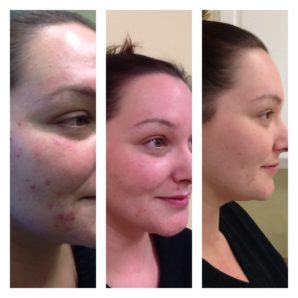Millions of people have skin conditions that include everything from rashes and hives to warts and cold sores. There are many different types of skin conditions, and each requires a different way to care for them. Knowing what those conditions are and how to care for them can make a world of difference for the person who has to deal with them.
“Skin conditions are often either uncomfortable or people find them embarrassing,” explains Dr. Sanjiv Saini of MD Dermatology, with locations in Edgewater and Lexington Park, Maryland. “The good news is that there are often treatment options for every type of skin condition, so that people don’t have to suffer or hide as a result of them.”
Although there are many different types, here are 5 of the most common ones, as well as how to care for them:
1. Acne. This is the most common type of skin condition, according to the American Academy of Dermatology (AAD). Acne can appear at any age, and a growing number of middle-aged women are experiencing the condition. The most effective way to treat it is by working with a dermatologist or acne specialist. This is the best option for effectively treating chronic acne in order to minimize permanent scarring and dark spots.
2. Psoriasis. Around 7.5 million people have this skin condition, according to the AAD, which is characterized by patches of raised skin that is reddish in color and has white scales. There are several treatment options, which include medications, phototherapy, and laser therapy.
3. Eczema. This condition is characterized by patches of irritated skin that may itch at times. It can be the result of several things, including genetics, exposure to chemicals, allergies, etc. Ideally, it’s good to identify what is triggering it, so that it can be avoided. It can also be minimized by avoiding scratching it, taking a warm bath, not wearing scratchy clothing, and putting on a thick fragrance-free skin ointment, as well as avoiding fragrance-free laundry detergent.
4. Rosacea. This common skin condition has characteristics of redness and can easily spread around the face. It can affect the eyes, skin thickness and texture, and more. Left untreated, it can get worse. Rosacea is a condition that needs a treatment from a dermatologist.
5. Moles. This is a condition that most adults experience, with some having up to 40 of them on their body. Any moles that are changing, bleeding, or itch should be seen by a dermatologist. Moles that may be skin cancer related or that people find unsightly can be removed.
“Skin conditions are common, but you don’t have to just suffer with them,” added Dr. Saini. “There are treatments available for them that will help you be more comfortable, or help eliminate or minimize them. It’s just a matter of taking those first steps to learn about the treatment options that are available to you.”
MD Dermatology offers a full line of clinical dermatology procedures including precision neck contouring, laser services, injection services, microdermabrasion, chemical peels, and more. They are a medically directed spa that offers a wide range of services to meet the unique needs of every patient. For additional information, visit their site at: www.mddermatology.com.

